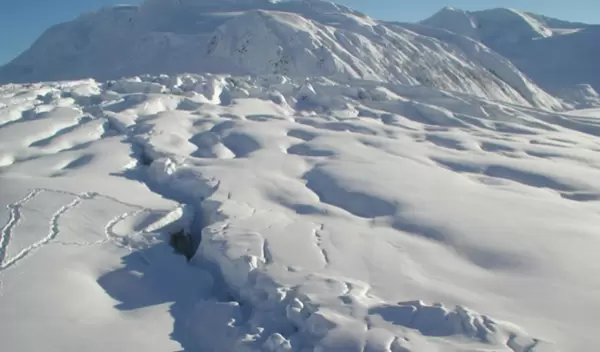
Researchers uncover secrets of how Alaska's Denali Fault formed
When the rigid plates that make up the Earth's lithosphere brush against one another, they often form boundaries, known as faults, on the planet's surface. Strike-slip faults, such as the San Andreas Fault in California and the Denali Fault in Alaska, are among the most well-known and capable of powerful seismic activity.
Studying these faults can help geoscientists not only better understand the process of plate tectonics, which helped form the planet's continents and mountains, but also better model today's earthquake hazards. Most studies of these types of faults, however, look only at the upper layer of the Earth's crust where the faults form.
New research, led by Brown University seismologists, digs deeper into the Earth, analyzing how the part of the fault that's near the surface connects to the base of the tectonic plate in the mantle.
The study, published in Geophysical Research Letters, focuses on the Denali Fault, a 1,200-mile-long fault that arcs across most of Alaska and some of western Canada. In 2002, it was the site of a magnitude 7.9 earthquake that sloshed lakes as far away as Seattle, Texas and New Orleans.
The scientists found that changes in how thick and strong the plate is in the location of Alaska's Denali Fault. The U.S. National Science Foundation-supported findings begin to fill major gaps in understanding how such faults behave and appear as they deepen, and will help researchers develop better earthquake models of strike-slip faults, regions with frequent and major earthquakes.
"That means when geoscientists model earthquake cycles, they'll have new information on the strength of deeper rocks, important for understanding the dynamics of these faults, how stress builds up on them, and how they might rupture in the future," said study co-author Karen Fischer of Brown.
The researchers used new data from a network of seismic stations to create a 3D model of seismic wave velocities throughout Alaska. With this innovative tool, the researchers discovered changes in the thickness and internal strength of the tectonic plate Alaska sits on. The model shows that changes in plate strength feed back into the mechanics of where the Denali Fault line is produced.
"An important area of Earth science is connecting what is happening deep in the Earth to processes taking place near Earth's surface," says Maggie Benoit, a program director in NSF's Division of Earth Sciences. "This study helps push that frontier to help us to better understand what drives earthquakes along tectonic plate boundaries."


